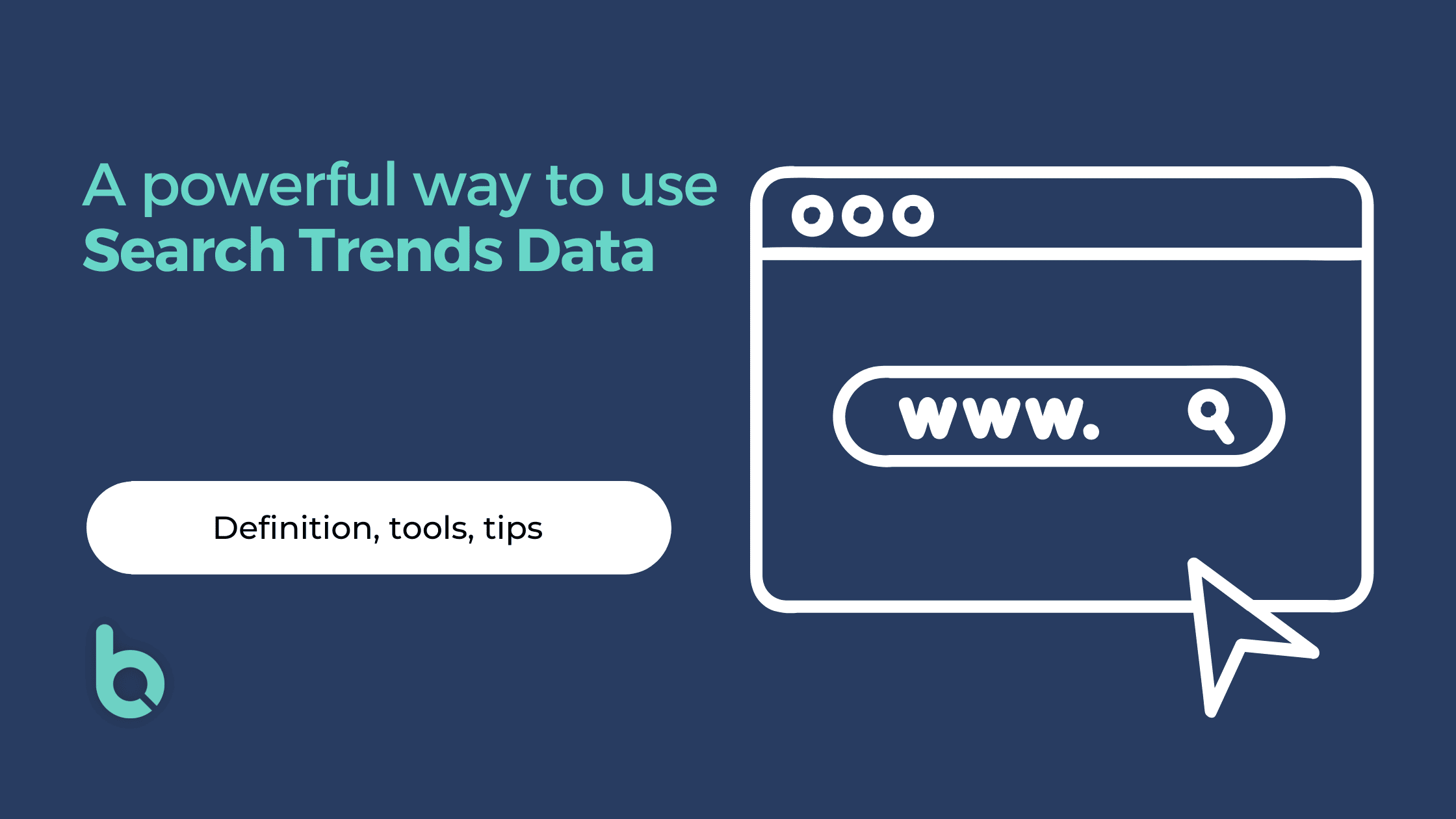Effective digital marketing is all about asking the right questions.
How do customers decide on their purchases? Do they discover products through platforms like Tiktok or Instagram? Or do they browse website banners and bestseller recommendations? How many websites do they visit before finally checking out?
Understanding customer behaviour used to be quite a challenge before the emergence of digital marketing tools. But now, you can answer those questions and find out precisely what your customers do before they purchase—all thanks to search trends data.
What are search trends?
Search trends in digital marketing are a way to track how people are searching for a business or product by providing data on Google search terms, such as volume, frequency, and seasonality.
When presented visually, a search trend is a graph representing the number of searches and clicks made for a particular term over a period of time.
Search trends data includes insights on both terms and traffic. Search terms are the words you type into a search engine. Search traffic is the number of people who have searched for those terms and clicked on a website.
The goal of using search trends data is to make informed decisions about how you should market your product or service. For example, if you run an e-commerce site and want to know what people are searching for online right now, then you can use search trends data to figure out what they want and then target them with your ads accordingly.
Where can we get this data?
The most common way to pull search trends data is through Google Trends—a free tool by Google that shows insights on search term popularity. It offers real-time data that you can filter depending on other factors you’re looking at, such as time, industry, season, or geography.

Google Trends focuses on keyword popularity, not traffic. This means it can only show data for popular terms people type on the search bar, not actual website traffic.
A powerful tool that provides search traffic is Similarweb, which gives you an overview of website performance, including how a website ranks in search results and the volume of traffic it receives, where the audience is coming from, and how they interact with the site.

You can also use SimilarWeb to see how much traffic a website is getting from different digital channels—like social media or paid search. These are extremely valuable data points that will allow you to optimise your campaigns as effectively as possible.
A more powerful way to interpret search trends
Search traffic and trends work hand-in-hand in giving you a comprehensive insight into your target market, product, and industry. It tells you when certain products are in demand (and, in contrast, when it drops).
For example, you could use a branded keyword like Nike Air and assess its search data to create better marketing strategies tailored to sneakerheads.
Audience intent: With search traffic data, you could identify the top websites or pages that get the most share of traffic over time—a data set you could use to understand audience intent. This will let you answer questions such as, “What percentage of consumers visit the Nike retail page versus other shoe review websites?”
Media buying: If you’re working in PR or media buying, you’ll also find valuable information on which content publishing websites receive some of the branded search traffic. You’ll want to partner with them to drive their audiences back to your website.
Consumer behaviour: Digging even deeper, traffic data can help you understand their buyer journey from product discovery to purchase. Do they look at influencer reviews before purchasing? Maybe they browse similar shoe styles that you could use for product recommendations? These consumer behaviour insights will let you tap customers at the right time with the right content.
What does your search traffic data say about your business and market? Work with us at Bring, and let’s find out. Give us a call for a consultation!








